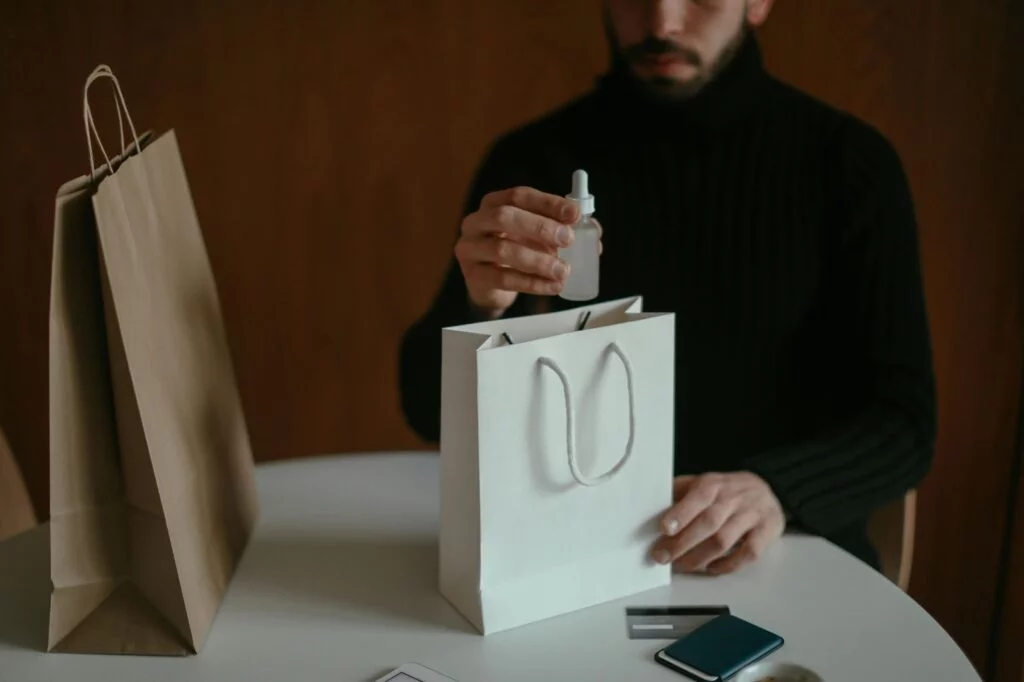From Hobby to Hustle: How to Start Selling Online in 2024
- by Ilona K.

Table of contents
Are you making candles that bring smiles to your friends’ faces? Or perhaps you have mastered your grandmother’s fudge recipe? Or maybe your green fingers make all your neighbours envy your garden? You can easily turn your hobby into a successful online business in a few simple steps.
The Internet opens up a world of opportunities for individuals to turn their passions into profitable ventures. Whether you're a skilled artisan or a passionate collector, there are many benefits of selling online - from a rewarding experience of others admiring your skills to making some extra money on the side.
And you are not alone. Many successful online businesses started as hobbies and side hustles before turning into profitable projects. Here are some inspiring examples:
- Stitch Fix: this personalized styling service started as a hobby for Katrina Lake, who wanted to help women find the perfect clothes based on size, budget and style. Lake started Stitch Fix in 2011, shipping the first Fix boxes from her apartment.
- Bonobos: this online men's clothing company started as a hobby for Brian Spaly and Andy Dunn, who wanted to create perfect-fitting pants for men and were sewing their first prototypes in their apartment kitchen.
- Glossier: founded by Emily Weiss, a former beauty editor, Glossier, a global beauty powerhouse, started as a hobby blog called Into the Gloss, where Weiss shared her beauty tips and recommendations.
So whether you’re into crafts, or design your own clothes, or create some fantastic artwork, or have another passion that others might be interested in, you can start an ecommerce business in no time. But how to actually start selling online?
When it comes to offering your products online, you have three primary options: setting a presence on established ecommerce platforms like Amazon, eBay, and Etsy; selling on social commerce on platforms like Instagram and TikTok; and selling via your own website.
Your choice depends on your goals, budget, and technical expertise. Importantly, those options are not exclusive to each other. You can start with one channel and expand to others as your ecommerce venture grows.
Use Ecommerce Platforms: A Quick Start
Ecommerce retailer platforms offer a convenient way to start selling online. They provide a ready-made infrastructure, including payment processing, shipping, and customer support, which can be especially beneficial for beginners. And what’s even more important: 49% online shopping customer journeys start and end on retailer websites.
Pros:
- Ease of use: these platforms are designed to be user-friendly, even for those with limited technical knowledge.
- Reach: they already have a large and engaged customer base.
- Built-in features: they offer a range of features, such as product listings, shopping carts, discounts, and order management tools.
Cons:
- Fees: you’ll need to pay fees for selling products, which can eat into your profits.
- Limited control: you’ll have less control over your brand and customer experience.
- Competition: you'll be competing with countless sellers, struggling to stand out.

Jump on Social Commerce: Get Trendy
Social commerce, which involves selling products directly on social media platforms like TikTok and Instagram, has gained significant popularity in recent years, reaching almost $1.3 trillion in sales in 2023. Last year alone, TikTok Shop generated $11.09 billion in gross merchandise volume (GMV). In the US, more than 11% of households have purchased items from TikTok Shop since its launch in September 2023
Pros:
- Direct engagement with customers: social media platforms provide a direct channel to connect with your target audience and build relationships.
- Leveraging social media trends: social commerce allows you to capitalize on popular trends and challenges, which can drive sales and engagement.
- Data-driven insights: valuable data on customer behavior can help you optimize your marketing efforts.
Cons:
- Platform dependence: you will be heavily reliant on the platform's algorithms and policies, which can change without notice, affecting your visibility and sales.
- Limited customization: you will have limited control over the design and functionality of your online store within the platform.
- Technical limitations: some platforms may have technical limitations or restrictions that can impact your sales or customer experience.

Make Your Own Online Store: Full Control
Building your own website gives you complete control over your online store, allowing you to customize it to your brand and create a unique shopping experience. As of 2024, there are 26.6 million ecommerce sites worldwide marking a 3.83% increase from the previous year. The majority of online stores are powered by Shopify and Wix with each powering 19% and 12% of stores respectively.
Pros:
- No fees: you won't have to pay fees to sell on your own website, which can significantly increase your profit margins.
- Full control: you’ll have complete control over your website's design, content, and functionality.
- Brand building: your website contributes to your brand identity online.
- Less dependency: your website reduces your reliance on other platforms to sell.
Cons:
- Technical expertise: you may need to learn some technical skills, such as HTML and CSS, or hire a web developer.
- Marketing: you'll need to invest time and effort into marketing your website to reach your customers.
- Initial costs: setting up a website can require an initial investment in domain name registration, hosting, and potentially website design or development.
How much would it cost to sell online?
The cost of selling online will vary depending on several factors, including the platform you choose, the volume of your sales, and the features you need.
On ecommerce platforms, you can expect to pay listing fees, final value fees (for auction platforms like eBay), transaction fees, payment processing fees. Additionally, you’ll need to pay for premium listings and other ad functions. The end fees vary based on product category and sales volumes. For example, Amazon in the most basic version charges $0.99 per item sold (Individual plan) or $39.99 a month (Professional plan).
Similar to that, social commerce comes at the cost of recurring fees, including listing, transaction, payment processing and subscription fees to features and tools, as well as advertising costs. At the time of publication, TikTok Shop charged a 6% referral fee on all qualified transactions.
Costs of selling via your own website include domain name ownership, hosting, website design and development. We’ve discussed a breakdown of costs to launch an ecommerce website in detail, and it broadly depends on the functionality, customization and a type of a domain name you’re after. If you decide to start with your own website, here are the main steps to follow.
How to Create a Website to Sell Products
- Choose a domain name: your domain name is your website's address on the internet. Choose a name that is memorable, relevant, and easy to spell.
- Select a hosting provider: a hosting provider stores your website's files and makes them accessible to visitors.
- Design your website: you can design your website yourself using a website builder or hire a professional web designer.
- Set up your online store: choose an ecommerce platform or use a plugin to add ecommerce functionality to your website.
- Add your products: create product listings, including descriptions, images, and pricing.
- Set up payment processing: choose a payment gateway to accept payments from your customers.
- Configure shipping: set up shipping rates and methods.
- Promote your website: use marketing strategies like SEO, social media, and email marketing to attract customers to your website.

Sounds like a plan? Here are a few ideas of domain names to get you started.
Turn your hobby into business with it.com Domains
Selecting a domain name should reflect the nature of your business. Luckily, on it.com Domains you can find a name that is short, memorable and represents your passion (availability and prices current at time of publication):
- candle.it.com ($49 per year, available) - for handmade scented candles.
- collect.it.com (premium domain, available) - to sell and exchange collectible items.
- charcuterie.it.com ($49 per year, available) - to offer your charcuterie board catering services.
- garden.it.com (premium domain, available) - for plants and seeds you’ve cultivated in your garden.
- soap.it.com ($49 per year, available) - for handmade soap business.
- stitch.it.com ($49 per year, available) - for selling stitching patterns.
- candy.it.com (premium domain, available) - for handmade candy and sweets.
- crochet.it.com ($49 per year, available) - for crochet patterns and items.
- cook.it.com (premium domain, available) - for selling your best recipes.
- coin.it.com (premium domain, available) - to sell and exchange collectible coins.
Looking for more creative ideas? Visit it.com Domains blog and follow us on social media.

Read also

Tips and Tricks
AI Appreciation Day: Top-10 Domain Names for AI Startups on it.com Domains
- 3 min read

